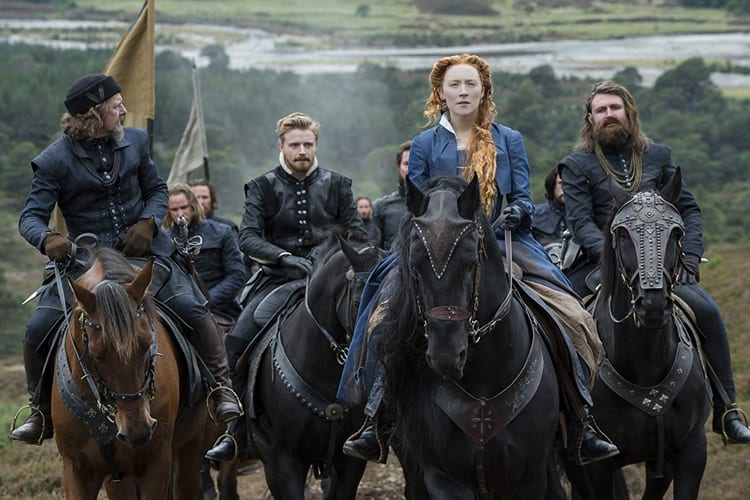Period pieces aren’t always thrilling. Amid the meticulous recreation of history, this genre often forgets to fill its movies with valuable characters and themes, eventually producing a hollow shell of a story draped in great costume design. That’s the biggest challenge facing “Mary Queen of Scots”, a historical drama about the young Queen of Scotland, Mary I, and her relationship with her cousin, Queen Elizabeth I of England.
Marketing efforts for “Mary Queen of Scots” have billed the movie as a bitter conflict between Mary and Elizabeth, which could not be further from the truth and is actually a dishonest depiction of what the movie is about. The director of “Mary Queen of Scots” is Josie Rourke, a prestigious director of British theater whose career has spanned nearly two decades. She is, also, a woman—a fact that would not be worth pointing out in an ideally egalitarian society, but in the context of the film industry’s repression of female filmmakers, this distinction gets at the thematic heart of Rourke’s movie.
“Mary Queen of Scots” is not about a malicious war between two Elizabethan era queens, as trailers would have you believe. It’s about two brilliant, powerful women who are driven to odds by the designs of man’s violence. “Mary Queen of Scots” is a strikingly potent film that could not have existed without a feminine perspective: Rourke’s performance direction colors the male characters as terrifying yet impotent; she depicts the historical conflict between Scotland and England as a world torn apart by lesser men grasping for greater power. This portrait of patriarchy’s contradiction—men having the dominant agency while deserving very little of it—is a refreshing lens through which to see women’s narratives, even in the independent film scene where female filmmakers aren’t as silenced as they are in Hollywood.
The actresses driving the movie’s narrative, Saoirse Ronan and Margot Robbie, both deliver phenomenal performances. Ronan’s eyes alternately simmer with ferocity and shimmer with compassion, fully expressing her emotional state with startling performative intimacy. Robbie, whose Elizabeth has submitted to inner turmoil more than the precocious Mary has, acts with restraint and exhaustion, finding a cadence familiar to women who have too long combated men’s machinations. Though Ronan’s character is the clear protagonist of “Mary Queen of Scots”, the screenplay finds time to develop both the women at its story’s center.
The same cannot be said for the historical details. The movie spans a lot of years and covers a lot of events in its two-hour runtime. As such, the plot moves with hard to follow haste, sometimes glossing over significant incidents with all the nuance of a high school history textbook. This pacing makes the back-and-forth elements of the conflict between England and Scotland difficult to remember—individual moments and scenes might not stick in your memory, but the movie’s cumulative effect will.
And what an effect it is. “Mary Queen of Scots” is a compelling look at how women have to fight just to stay alive and hold their own, even when they’re royalty. In Josie Rourke’s film, history is a game of male pawns stopping at nothing to hinder mighty queens, and the resulting chess match is defiantly feminist.
★★★★½ (4.5/5)




